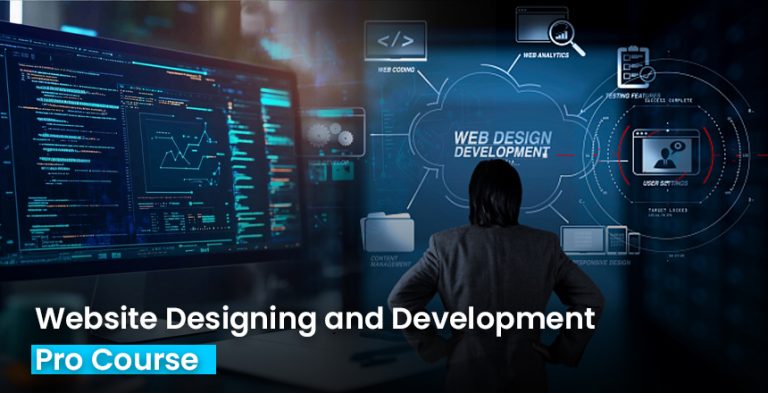In the digital age, UX and UI design are of utmost importance in creating intuitive and user-friendly products. Whether a mobile application, a website, or a digital service, great UX/UI design is a unifying factor that leads to customer satisfaction and customer engagement. This has led to an increased need for well-trained UI/UX designers as businesses invest in digital transformation—what’s great is that you do not need to attend a physical design school to get started! There are now countless online courses and bootcamps that provide flexible, affordable, and high-quality UI and UX design training.
We glean here what truly is considered to be the premier online UX/UX design courses and bootcamps available today and what should take center stage in your considerations of choosing one.
Why Learn UI/UX Online?
The following are some of its advantages when you opt for online learning when pursuing UI and UX design:
- Flexibility: Study at your own pace, from anywhere.
- Affordable: Most online programs are fairly cost-effective as compared to traditional degrees.
- Updated Curriculum: Programs are updated regularly for current tools, trends, and technologies.
- Build a Portfolio: Most of the reputable courses and bootcamps will have projects to do, which help build a portfolio, one of the major assets to have when applying for jobs.
- Beginning from a total novice, to a graphic designer moving into digital design, or even a developer trying to add design into his skillset—there is a program for you.
Best Online Courses and Bootcamps for UI/UX Design
1. Google UX Design Certificate (Coursera)
Best for Beginners
- This certificate program offered by Google on Coursera is an introductory-friendly curriculum all about UX design basics, from wireframing and prototyping to user research and testing.
- Duration: ~6 months (at 10 hrs/week)
- Cost: Free 7-day trial, then ~$39/month
- Pros: No experience required, hands-on project, strong employer recognition
- Cons: Limited UI-specific content.
2. Springboard UX Design Bootcamp
- Best for Career Changers
- Springboard’s UX Design Bootcamp is aimed at career switchers. It offers one-on-one mentorship, career coaching, and a job guarantee (get placed in a job in six months, or your money back).
- Duration: 6 months (15-20 hrs/week)
- Cost: ~$11,900 dollars (financing options available)
- Pros: Personalized mentorship, job guarantee, great outcomes from alumni
- Cons: More expensive, more time commitment
3. CareerFoundry UX Design Program
The best all-rounder
- CareerFoundry offers a well-rounded program, in which the UX learning path is optional for a UI specialization. This program covers everything users might require, from user research to usability testing and responsive design.
- Duration: 6-10 months
- Cost: ~$7,000
- Pros: Mentor + tutor support, portfolio projects, job guarantee
- Cons: Time-intensive, UI part is optional
4. Interaction Design Foundation (IDF)
Best for Self-Paced Learners
- IDF has created affordable, self-paced UX and UI courses by design experts. With well over thirty such courses, it’s quite possibly the best way to enhance foundational knowledge with other learning.
- Cost: ~$15/month (annual membership)
- Pros: cheap, vast course library, quality content
- Cons: Less structure, no career supports
5. Designlab UX Academy
Best for UI/UX Portfolio Building
- Designlab has a strict focus on project-based learning wherein the student creates a full portfolio with help from a mentor. It is a great option for people looking to go into the field professionally.
- Duration: 6-9 months
- Cost: ~$7,749
- Pros: Mentorship, portfolio-focused, career coaching
- Cons: Selective admissions, time commitment
- 6. Udemy: UI/UX Design Course
- Best for Budget Learners
- With myriad options, courses on UI/UX offered by Udemy include some of the best-rated ones, such as “User Experience Design Essentials – Adobe XD UI UX Design.”
- Cost: $15-100 per course (with frequent discounts)
- Pros: Inexpensive, variety of courses, beginner-friendly
- Cons: No Mentorship, No Career Support
Key Things to Look for in an Online UI/UX Course
- Curriculum Depth: One should have both UX (research, personas, testing) and UI (typography, color theory, visual hierarchy) covered.
- Tools Taught- The more industry-standard tools being taught, the better. Standard tools usually include Figma, Adobe XD, some variants of Sketch, and InVision.
- Mentorship- Mentorship enhances the learning experience and outcomes.
- Career Support- Services for resume preparation, portfolio reviews, job placement, all are needed to enter that very first role.
- Portfolio Projects- A strong portfolio is indispensable to securing a job. Thus, practical and real-world projects should be part of your program.
- Community- The support of peers and networks can greatly enhance your motivation and motivation.
Final Considerations
UI and UX are dynamic, exciting fields with a huge potential for career advancement. By knowing the right online course or bootcamp, you can help hone your skills in freelancing, a tech startup, or a renowned company.
Spend time evaluating your intentions and select a program that fits your learning, budget, and career aspirations. The design industry has room for a few more creative souls, and there has never been a better time to step in.








